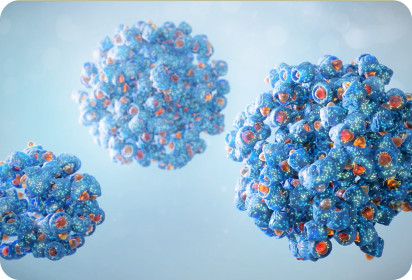Science
Our relentless focus on understanding and addressing unmet medical needs in ophthalmology has resulted in transformative innovations that aim to make a real difference in patients’ lives


Enabling eye drops to reach the back of the eye
OPTIREACH® is a solubilizing formulation technology that has been developed by Oculis’ Icelandic co-founders Professors Einar Stefánsson, and Thorsteinn Loftsson to enable eye drops to reach the back of the eye. The technology enables:
Increased solubility of drugs in eye drop formulations
Longer residence time on the eye surface
Drug passage to the posterior segment of the eye
Conceptual illustration
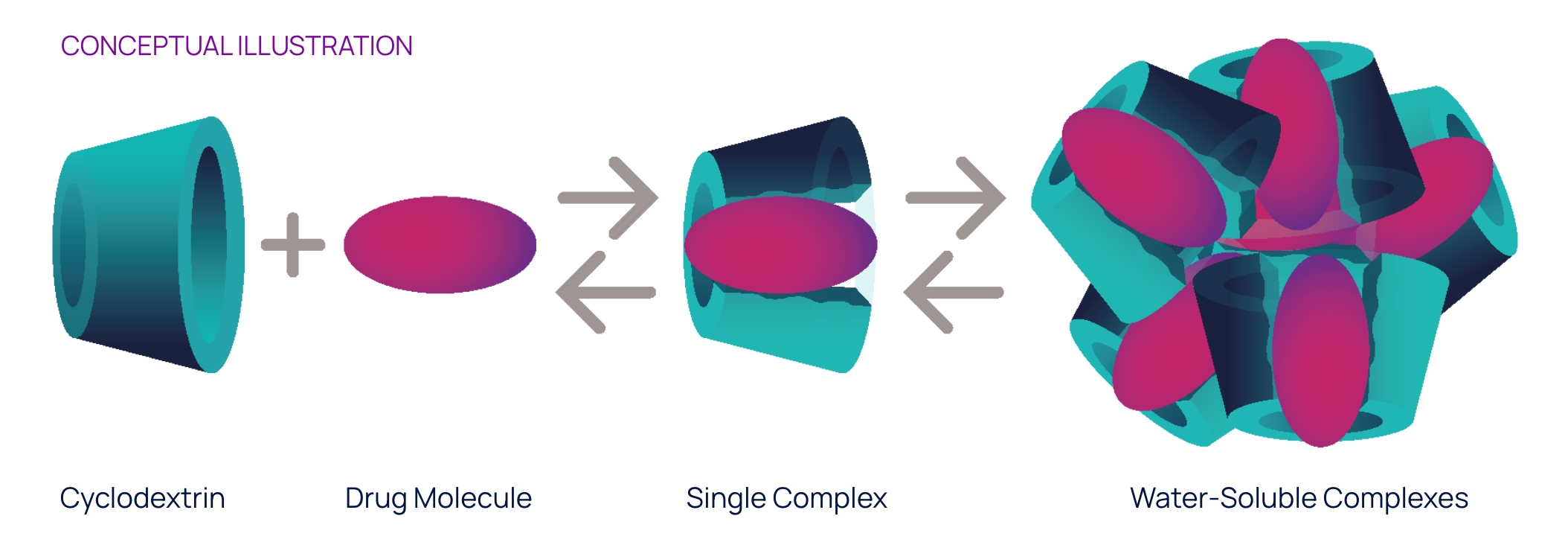
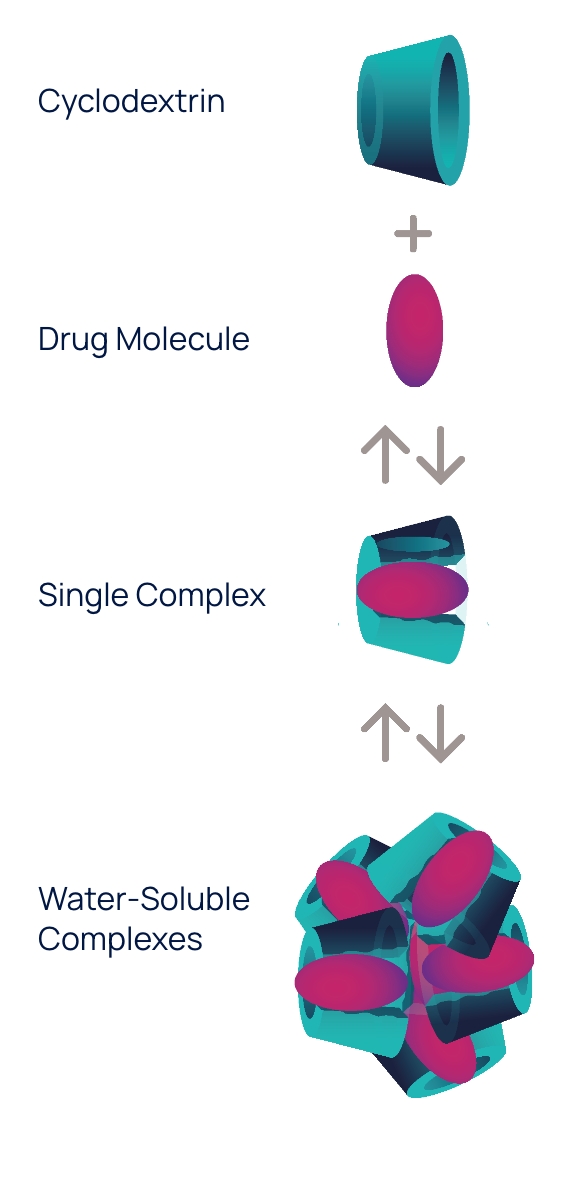
OPTIREACH® improves the ability to formulate drugs as eye drops and enhances their bioavailability in eye tissues
The OPTIREACH® solubilizing formulation technology is one of the proprietary platforms underpinning Oculis’ pipeline. It was leveraged to develop Oculis’ most advanced product candidate, OCS-01, an innovative high concentration preservative-free eye drop candidate, currently in Phase 3 development in patients with diabetic macular edema (DME) and for the treatment of inflammation and pain following ocular surgery.
The goal of this novel formulation approach incorporating selected features of specific cyclodextrins is to improve the solubility of lipophilic drugs, increase their residence time on the eye surface while enabling the drug passage to the posterior segment of the eye.
Pre-clinical and clinical data suggest that the OPTIREACH® solubilizing formulation technology can open the way to formulating drugs as effective and well tolerated topical treatments of retinal conditions with high unmet need, such as Diabetic Macula Edema. Significant improvements of dosing frequency and tolerability for anterior eye conditions, such as, ocular inflammation and pain after ocular surgery may also be expected.
The goal of this novel formulation approach incorporating selected features of specific cyclodextrins is to improve the solubility of lipophilic drugs, increase their residence time on the eye surface while enabling the drug passage to the posterior segment of the eye.
Pre-clinical and clinical data suggest that the OPTIREACH® solubilizing formulation technology can open the way to formulating drugs as effective and well-tolerated topical treatments of retinal conditions with high unmet need, such as Diabetic Macula Edema. Significant improvements of dosing frequency and tolerability for anterior eye conditions such as ocular inflammation and pain after ocular surgery may also be expected.
OCS-01
has been developed using the OPTIREACH® solubilizing formulation technology
Explore how OCS-01 could become the first non-invasive eye drop to treat DME as well as a once-daily treatment for inflammation and pain following ocular surgery.
Innovative antibody fragment technology enabling the development of potentially the first anti-TNFα biologic eye drop to treat inflammatory eye diseases
The unique antibody fragment technology allows for the development of a small, pharmacologically active, humanized single chain variable fragment antibody (scFv). The lower molecular weight of the fragment relative to the whole antibody enables the development of a higher formulation concentration enhancing its penetration into ocular tissues. These characteristics make scFv more suitable than full-length antibodies for the topical treatment of ocular surface diseases, such as dry eye disease (DED), or anterior chamber diseases, like anterior uveitis.
OCS-02 (licaminlimab) is an anti-TNFα antibody fragment formulation which binds to and neutralizes the activity of human TNFα. It has the potential to become the first anti-TNFα biologic eye drop to treat ocular inflammation.
CLINICALLY PROVEN MODE OF ACTION (MOA)
With their proven anti-inflammatory and anti-apoptotic dual mechanism of action, anti-TNFα agents have been approved as systemic treatments for several inflammatory diseases and with transformative impact on other therapeutic areas.

ENHANCED OCULAR PENETRATION
Lower molecular weight allows for higher concentration and enhanced ocular tissue penetration.
PROPRIETARY GENETIC BIOMARKER
Predictive and pronounced response of OCS-02 (licaminlimab) in patients with TNFR1-related biomarker highlights potential opportunity to transform the treatment paradigm of DED with a precision medicine approach.
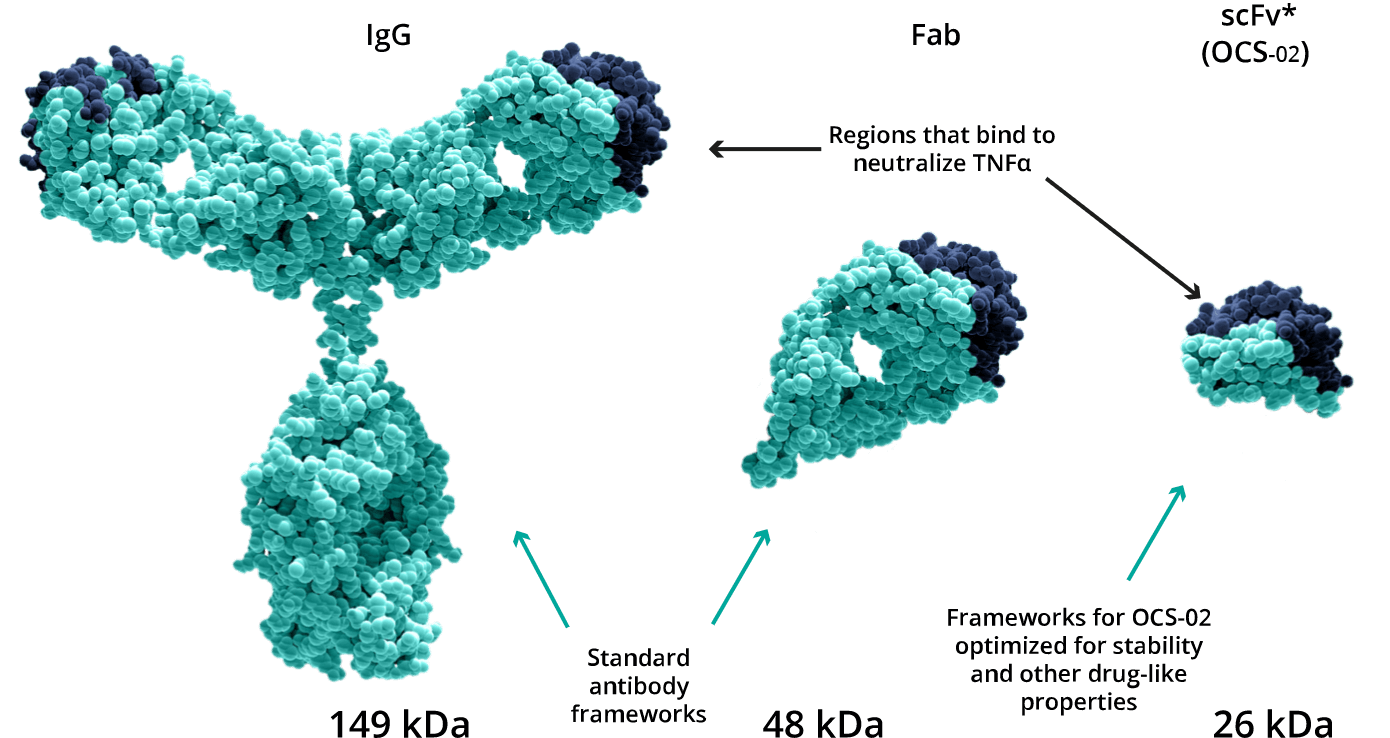
OCS-02
an anti-TNFα eye drop candidate, could transform the treatment paradigm of DED with a precision medicine approach.
Find out more about OCS-02 (licaminlimab) and its potential as the first anti-TNFα biologic eye drop to treat Dry Eye Disease and Uveitis
A novel neuroprotective approach to treat optic neuropathies and retinal diseases
OPTIC NEUROPATHIES AND RETINAL NEURODEGENERATION DISEASES SHARE COMMON FEATURES
because the cellular and molecular responses to neurodegeneration (oxidative stress, apoptosis) are similar.1
NEUROPROTECTIVE STRATEGIES LEAD TO INCREASED RETINAL NEURONAL SURVIVAL AND PRESERVE VISUAL FUNCTION
and therefore can be used across multiple retinal diseases and optic neuropathies.2
NEUROPROTECTIVE DRUGS ARE INTENDED TO SLOW DISEASE PROGRESSION and be part of the therapeutic strategy in addition to other treatments targeting a specific cause for retinal and optic nerve damage.2
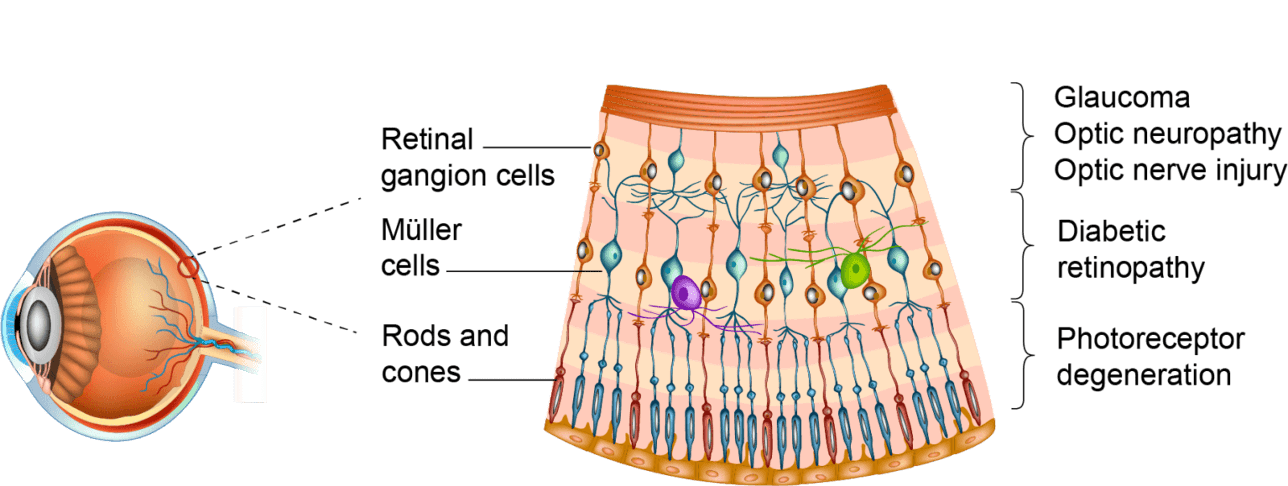
OCS-05 is a novel first-in-class peptidomimetic small molecule with the potential to become a neuroprotective therapy for acute optic neuritis and other neuro-ophthalmic diseases.
Neurotrophic factors (NTFs) are a family of neuro-specific growth factors produced by the body to promote cell proliferation, survival, or regeneration. In many retinal diseases and optic neuropathies, the release of these neurotrophic factors declines. The aim of a neurotrophic factor-based therapy is to restore NFT levels and/or functions in the body.
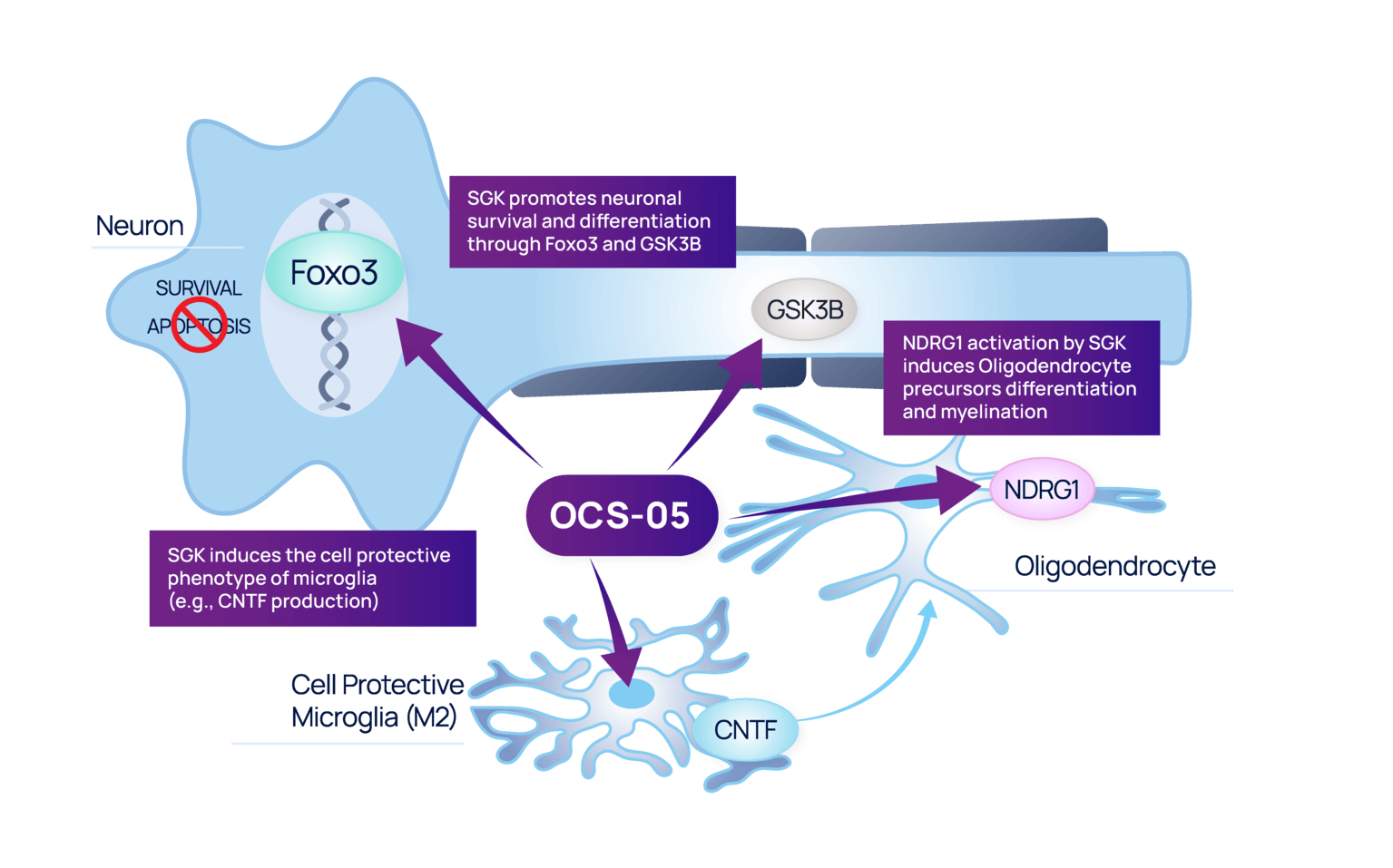
OCS-05 has a distinct mechanism of action related to the activation of the trophic factor pathways such as IGF-1 and BDNF. In ophthalmology, this mechanism of action could potentially protect the nerve axons in conditions such as acute optic neuritis, where OCS-05 could prevent chronic vision loss.
Oculis aims to demonstrate the neuroprotective and/or restorative benefits of OCS-05 in acute optic neuritis, as a proof-of-concept, and then explore additional ophthalmology indications which could benefit from neuroprotection including glaucoma, diabetic retinopathy and neurotrophic keratitis.
OCS-05
is being developed as a potential neuroprotective drug to protect and repair neurons affected in neuro-ophthalmic diseases.
Explore OCS-05 as a potential neuroprotective and restorative treatment for acute optic neuritis.
